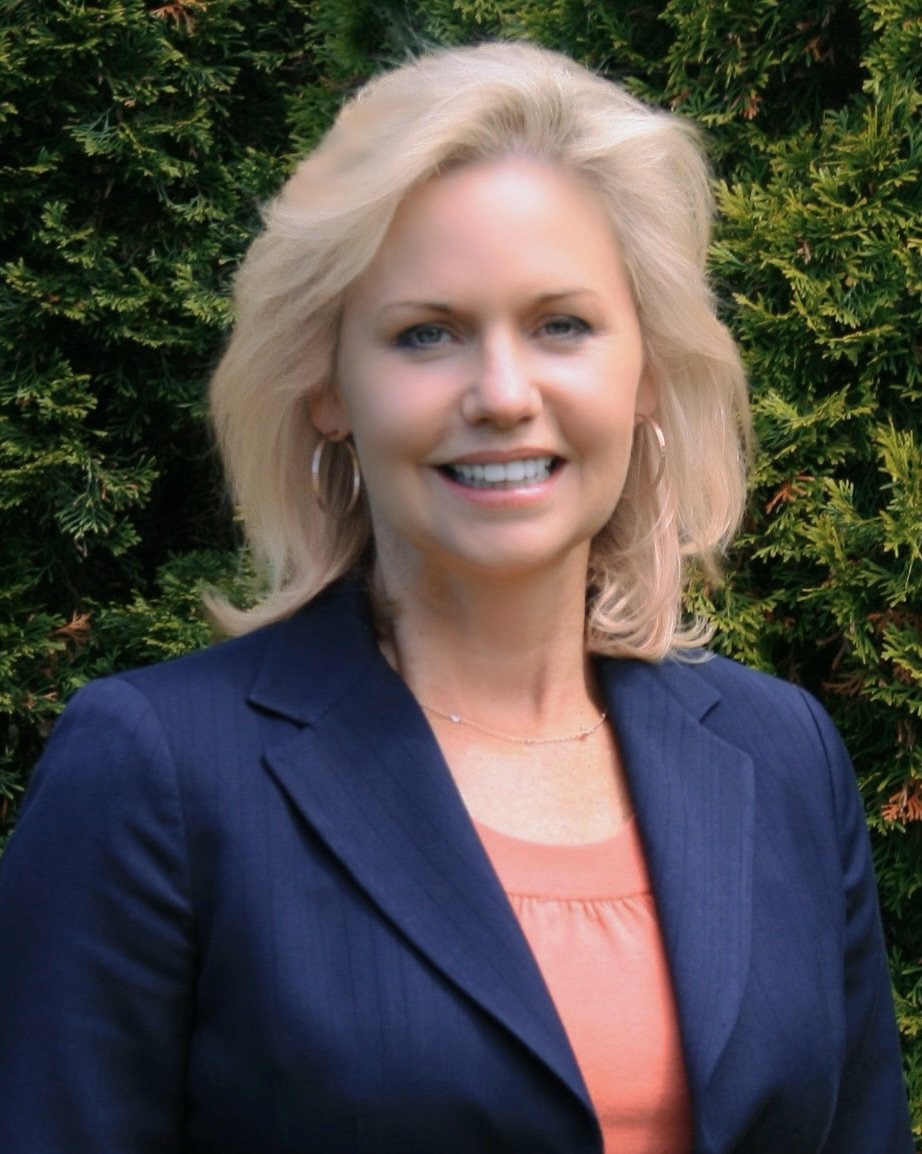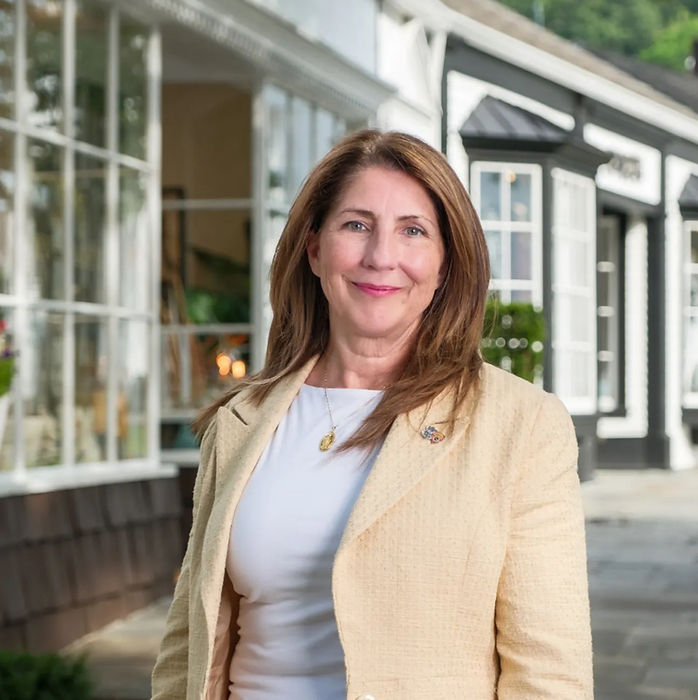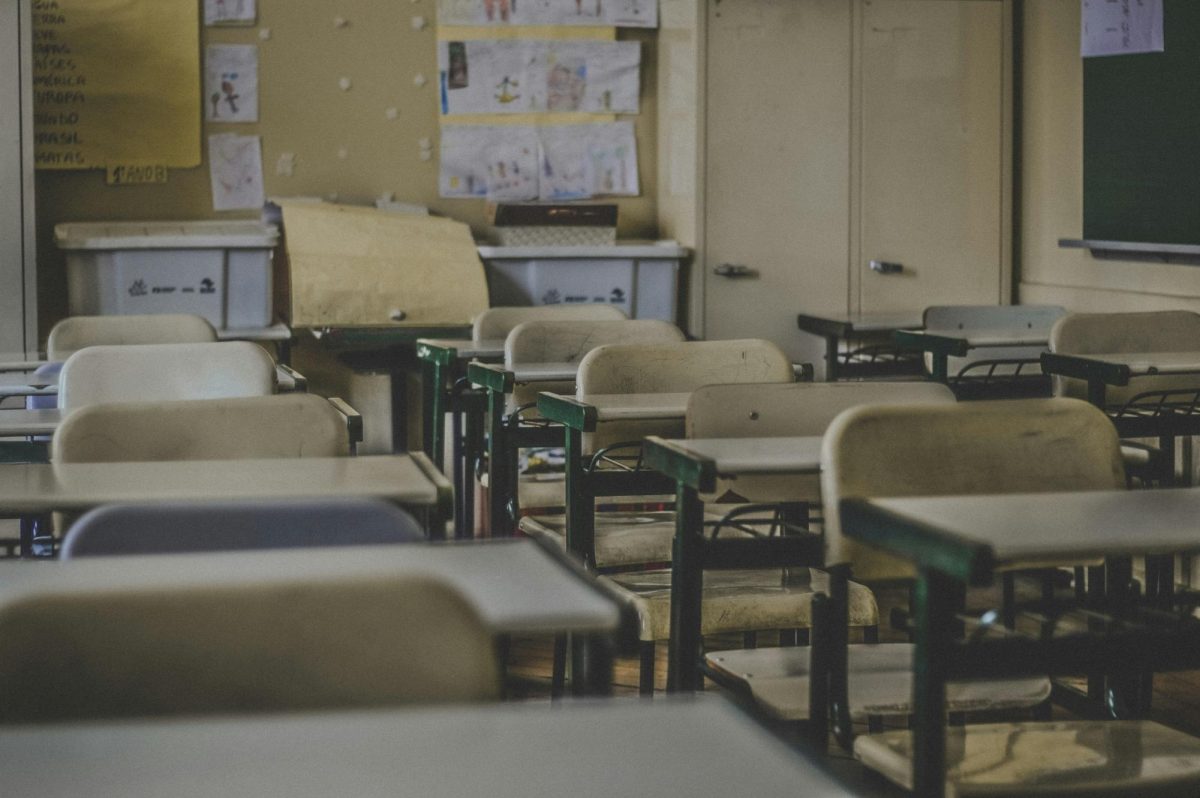Sarah Anker is the Democratic candidate for New York State Senate District 1, which Three Village is in, and is running against incumbent Republican Anthony Palumbo. She previously served in the Suffolk County Legislature for over 12 years until she was term-limited. Below is the full transcript of our interview with her, lightly edited for clarity.
Kaleidoscope: Could you tell us why you’re running for State Senate and what your campaign’s primary issues are?
Sarah Anker: I’m running for State Senate because I feel there’s so much more to do. I have experience and the resources and I want to connect all those things and try to get New York in a better place. I was a legislator for 13 years, and I’ve learned about a lot of issues, which include the number one right now: affordability.
When you graduate from college, how are you going to be able to afford to buy a home? The average cost is $650,000, which is unaffordable. You also might have student loans or car payments. So, I’m looking to try to create programs that support young adults trying to get their first home, as well as seniors trying to downsize.
The other big issue is water, as we live on an island and our water has been compromised by chemicals and all kinds of other stuff. That’s something I’ve been working on for over 25 years, making sure that we identify if there’s something in our drinking water and clean it up. It’s not even just the drinking water, it’s also surface water. We’re an island surrounded by water, and some of it gets polluted, so I worked on addressing the issue of sewers and septic. That’s a big part of Suffolk County. Less than half the people that live in Suffolk County have had sewage. In other words, it contaminates our surface.
Other issues include opioid addiction, mental health, social media, bullying and teen suicide. There’s some heavy stuff related to health, especially in our kids. Vaping has become a huge problem. There’s a lot of harmful stuff out there, so we need to make sure our kids are safe. And whether you are a young child in elementary school, all the way up to a college student, there’s a lot of marketing going on, especially with social media. It’s affecting people, not even just our kids, but people negatively. There are a lot of scams out there. We just need to make sure that the government is doing its job.
A major concern for voters on Long Island is the cost of living and housing. How do you plan to address these issues in the State Legislature?
I have a few ideas regarding what we call affordable quality housing. One I worked on while I was a legislator had to do with building near transportation hubs, like railroad stations and places. If people want to commute, they would have affordable housing. It’s called transit-oriented development housing.
If you notice, if you’ve been to the Ronkonkoma train station, you’ll see a lot of housing in those areas. I was hoping to create something like what the senior citizens have. A lot of these folks live in PRCs, Planned Retirement Communities, and you can live in them if you’re age 55 and older. Then, for whatever reason, the federal government will say it’s age discrimination if you build houses for a specific age group other than 55 and over. That’s a federal law, and that’s something maybe on a federal level we could change to address the housing shortage for young adults. I worked with organizations, including the Long Island Builders Institute, Stony Brook University and some of the local areas to see if we could do something like that. What we looked into was building on or near college campuses, so that also encompasses that transit-oriented development, where you build near railroad stations for commuter purposes. That was one idea that I had that I actually worked on as a legislator. The other idea is to provide some type of subsidy for young adults, because what’s happening is these corporations and companies want to hire these young kids out of college, but the kids have nowhere to live. So if the corporations and maybe the government can contribute to a pool of funding to help subsidize the cost of living, I think that would be a good thing. It would help the person, it would help the company and it would help our economy.
There could be a program similar to that and I’m actually looking into that now. By the way, I gave it a name: the Planned Young Adult Community, or PYAC. But again, because there’s that federal law, you can’t specifically build for young people. So, you have to work either to change the law, which I think we should look to change on a federal level, or you work around it. So those are a couple of ideas as far as affordability and housing.
Another development that would affect many Long Islanders is the introduction of congestion pricing into midtown Manhattan. Though Governor Hochul indefinitely suspended the change, there is still speculation about its future. What do you believe that future should be, and do you plan to propose any alternative measures?
The big issue now is that the governor waited until the very last minute after I believe it was tens of millions, if not hundreds of millions of dollars, had already been invested into this program. So that is a big concern, and a lot of money has been focused and used specifically for this. Do I like congestion pricing? No. I don’t want to spend extra money to go into Manhattan after you’ve already spent a fortune between the gas, the tickets to the Broadway show, the meal, and the parking. It’s a lot, and the issue I also have is that Long Island does not get its fair share of money back from the MTA, the Metropolitan Transportation Authority. And if Long Island, New Jersey, and some of these other outside areas are paying to help with the train issue, then we need some type of benefit.
I also have a concern that if you close down the lower part of Manhattan, who’s going to say you’re going to get a ton of traffic north of that congestion pricing area? I think there needs to be more of a study into this particular issue. There is an issue with too much traffic in the city. My daughter lived in the city for over 10 years and there’s a lot of traffic. I’m not sure what the answer will be, but we need to look at all the factors. And this is what I did as a legislator, and I want to do as a New York State Senator, is to make sure everyone that’s a stakeholder, whether it’s an issue or a project, make sure you’re including those folks because if you don’t, you’re not going to get the bigger picture and you’re going to run into problems like what we’re seeing with congestion pricing. I think there’s a better way to handle the issue. I’m not sure exactly what that would look like. Maybe provide parking outside before you get into Manhattan and then you would take the train or transit, like how we have the park and rides right here on Long Island. But there needs to be a more creative answer to trying to understand how to get that traffic out of Manhattan because it’s been a problem for a while.
You’ve done a lot of work in environmental conservation and expanding renewable energy, including writing a children’s book titled Below the Ocean: Keeping Our Sea Friends Safe. How do you believe New York State should be addressing environmental issues and climate change, and what is your stance on offshore wind development near the East End?
Before being a county legislator, I was the energy director for the Town of Brookhaven. So, I created the energy department, and the reason why was because Brookhaven Town had received $4.5 million from the federal government to encourage residents to use renewable energy. It was called the Green Homes Go Solar program. That’s when I got to talk to a lot of energy folks, including LIPA (Long Island Power Authority), PSEG, National Grid and a lot of the energy people across the board.
I have always been an intense environmental advocate because I truly feel our environment directly impacts our health. When I started a not-for-profit called Community Health and Environment Coalition 20 years ago, people didn’t really think about that. People didn’t understand how cancer works: you’re exposed to a carcinogen, a cancer-causing chemical, and it could take up to 30 years for you to feel the impact of that. Getting back to the environment and getting back to renewable energy, yes. I am a very strong proponent of wind power, solar, geothermal, and even hydrogen is starting to come to the surface as far as a possible renewable energy source. I’m not crazy about nuclear energy. I never have been because we do not know what to do with the waste, so we bury it. And that, to me, is not addressing that issue. But yes, I do support those topics.
New York State is very proactive in addressing climate change by trying to get off fossil fuels. The problem is that the state wants to do it really quickly. I think it’s a great idea, but there needs to be a transition. An example would be: I drive a hybrid car where it uses gas, but it also uses electricity. There needs to be a better transition period. The folks need to understand that we just can’t switch and we need to prepare for that. They’re working on that, and I’d like to help facilitate that and expedite it. So that needs to be a consideration when you go from one thing to another, you have to have a transition period, and we need to do a better job with that.
Earlier this year, Governor Hochul tried to change the Foundation Aid formula used to calculate state funding for schools and eliminate “hold harmless,” before saying changes would be pushed off to next year. Do you support these budget changes?
No, I believe that the schools need to be funded, and this is just another way to help provide support for our school districts. The “hold harmless” though, gets a little tricky. Unfortunately, because people can’t afford to live here on Long Island, they’re moving, and especially a lot of young families. Enrollment is going down and in just about every school district, it’s dropping substantially. So we need to relook at that, and I’m hoping the governor will consider that as she’s doing her budget.
I would be happy to work with the schools, the school districts and the school unions just to make sure that schools are properly funded, because we need to make sure that our teachers are paid a good wage and that the curriculum is supporting future jobs in fields like technology. Health is a big thing around the corner.
Just as an example, my daughter just got her degree in teaching, and I was speaking to one of the local superintendents. He had 400 applications for one teaching job, so it’s a struggle. It’s a struggle with the whole education and teaching situation here on Long Island, but I truly believe we have one of the best educational systems in the country. A lot of our kids here go to good colleges, they get good jobs, and we just need to make sure that we’re helping them better prepare for the future.
Governor Hochul is also seeking to establish a new policy that limits cell phone use in schools. Do you support limiting cell phones, and to what extent?
That’s a tricky question because cell phones have become part of our children’s lives. It’s good, and it’s bad. When I was in school, there were no cell phones, so you didn’t have that distraction. I think there needs to be limited use of cell phones, especially when there’s teaching, and if there is a distraction component regarding having cell phones. Now, can you have your cell phone during breaks, during lunch or on your own time? I think that’s a fair situation for kids to have their phones because there’s almost like a mental attachment to having your cell phone. Even adults will do this—when you leave your cell phone somewhere and you don’t have it on you, people will panic because they feel it’s almost part of their life. They have to have their cell phone, and that’s a little concerning. Do I have my cell phone? Yes. Do I do a lot of work on it? Absolutely. Will I put it down and turn it off at times? Occasionally, yeah, but again, it’s just how our technology has evolved. And we have to be sensitive to the needs of students.
But also, I’ll go into a different direction too regarding cell phones. We need to crack down on these social media platforms. They’re given free reign to create a negative impact in our kids’ lives. It’s affecting the mental health of our children, so again, there’s a fine line. We have to make sure that not only the government and the parents and the teachers are involved in this particular issue of cell phones, but the students also need to provide input about what would work for you. I would invite you and your friends to be part of this discussion because this is how a democracy works. We bring everyone into the fold, identify pros and cons, and come out with hopefully something good and productive.
Drug overdoses in the district remain a significant issue. What will you do to reduce substance abuse?
I was the chair of Suffolk County’s Addiction Prevention and Support Advisory Panel for about 5 years. And it didn’t matter what party you were from, or your age. I brought people into the mix. I had about 30 people on my advisory panel, and we worked with all the different levels of how we can address the issue of drug addiction, especially the opioid addiction issue. That includes the parent or teacher dealing with kids, law enforcement, the courts and the advocates that have rehabilitation centers. Again, I keep going right back to the idea of this broader perspective and making sure people’s ideas and their information are included.
A million people have died of opioid overdoses*, mainly because of fentanyl, and because people, not just kids, but adults, don’t realize how strong these types of drugs are. A hundred thousand people per year, Americans, die of drug overdoses, and that’s more than the combination of most of our world wars. So if you combine World War I, World War II and the Vietnam War, all those people (Americans) that died in those wars, the opioid epidemic has killed more. I call it an internal war. I suggest we tap into this, I think it was $850 billion in our defense department, and really crack down on the drugs getting into our country. [*Editor’s Note: According to the CDC, over 1 million Americans have died from drug overdoses since the center began collecting data in 1999. In recent years, approximately 75% of drug overdose deaths have involved an opioid.]
Basically, fentanyl is made in China. It’s coming up through the Southern border and the Northern border, even Canada. We talk about immigration—you can build a wall, but the problem is, whether it’s immigration or the drug dealers, they’re gonna go under it, because they don’t care about the tunnels, or they’ll fly over it. We have to use our technology and our ability to defend our country to address this issue immediately.
I’m such a strong proponent of trying to save the lives of these folks. And these folks, a lot of them are kids, so I would propose really ramping up the educational component. We’ve had that in Suffolk County for a while. We brought in the police department, the Suffolk County Sheriff and the Suffolk County Health Department into schools. Stephen Dewey has an excellent presentation. He’s a scientist originally from Brookhaven National Lab, and he would go into high schools and show the permanent damage that will happen to your brain. It will never reset itself. You will always be on some type of medication because that’s what you’re doing when you’re taking these drugs and you get addicted.
Unfortunately, not that many years ago, doctors were giving this out like candy. Then, the people would get addicted and the government pulled away the opioids and the people that were addicted went to illegal opioids, such as heroin and fentanyl and some of these other types of drugs. So again, education, law enforcement, the courts. Now the courts have a special court where you can go to and the judge will evaluate that if you’re addicted, instead of going to jail for selling drugs, if it’s a low level crime, you can go into rehabilitation and then not have to go to jail.
It provides a way to get that individual help to make sure that person’s life is turned around. I think those are the main points that are really important when addressing drug addiction. And again, people need to talk to their friends and their family members and say this is really heavy stuff.
At this point, the call cut off and we were unable to reconnect. Ms. Anker responded to the remaining questions via email.
Kaleidoscope: According to your website, you plan to “fight for stronger laws that keep criminals off the streets and laws that protect those that protect us.” What changes need to be made within our criminal justice system, and how do you believe we can ensure effectiveness and safety for our law enforcement?
Sarah Anker: We need to make sure we provide funding and the latest technology for law enforcement so they can do their job. We need to address recidivism, that is when a person continues to cycle through prison after they are released. I worked with the Suffolk County Sheriff to provide services to assist inmates with guidance to get back on track and become productive members of society.
In 2022, the Democratic nominee for this Senate district lost by over 12 points to incumbent Anthony Palumbo, a Republican. Why do you believe you have a better shot at winning?
I have represented a heavily Republican district, as a Democrat, for well over a decade. On paper, my candidacy should never have been possible. However, I have consistently made my campaigns about serving the public and delivering results. My slogan is “People Over Politics,” which embodies the spirit of my approach to public service. With my record of delivering results to my constituents, and a district with a slight registration advantage to Democrats, I am very confident that we will flip this seat and I will become the first female State Senator for NYS Senate District 1.
Many of your endorsements cite your commitment to bipartisan action as one of your best-suited qualities for office. How do you foresee yourself working across the aisle for the common good of New Yorkers?
I have always worked with my colleagues across the aisle to deliver common sense results for my constituents. While there may be a philosophical difference between the two parties, it has been my experience that by sitting down with members of the other party and finding solutions to kitchen table issues, there is always common ground. I will bring this experience with me to Albany to search for the common ground for the common good.
Turnout among young voters tends to be significantly lower than other age groups. What can you do to promote civic engagement among youth?
We have a dedicated arm of the campaign that is solely focused on youth outreach and engagement on the various college campuses scattered throughout the district. With this, we aim to motivate the youth vote ahead of the November election. Remember, it’s your future that’s at stake and young adults need to be part of the solution.
Kaleidoscope would like to thank Ms. Anker and her team for taking the time to interview.









